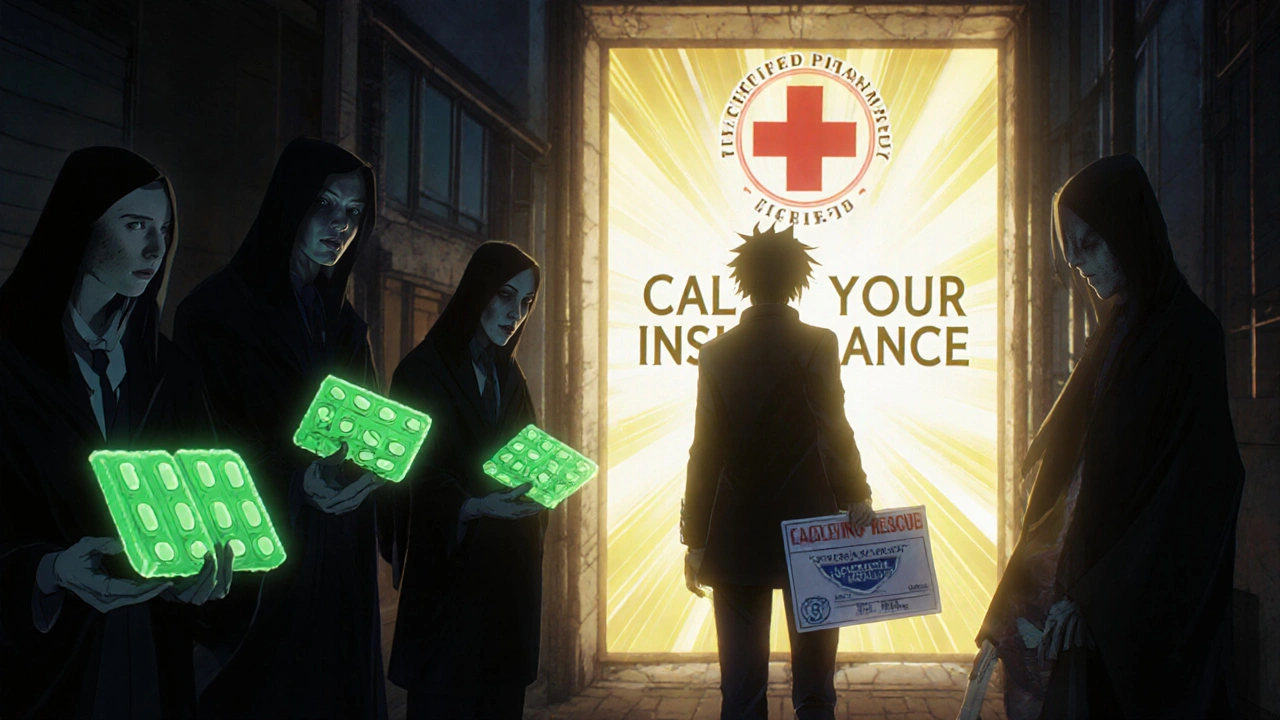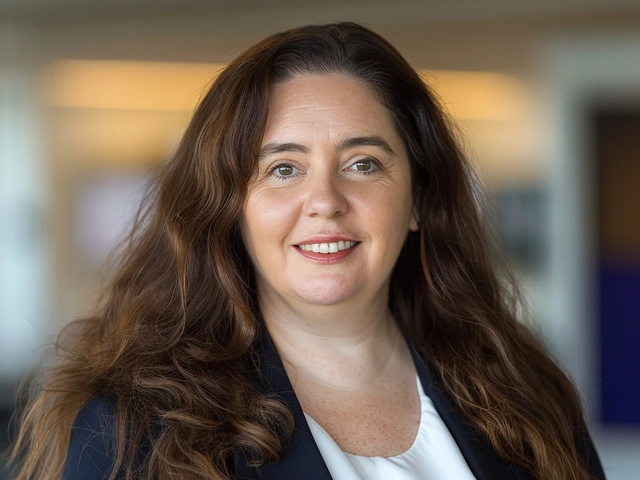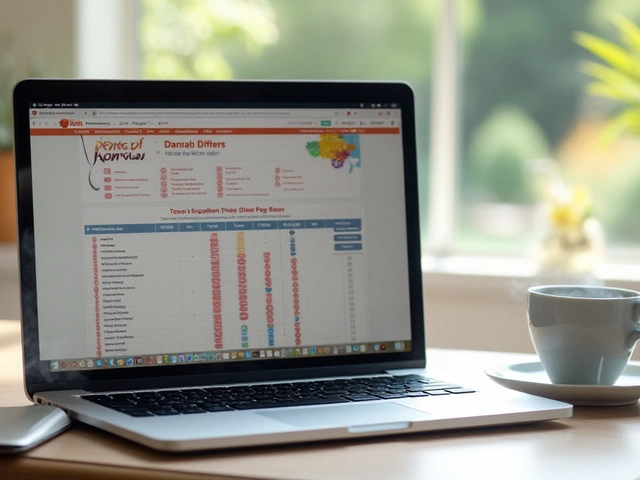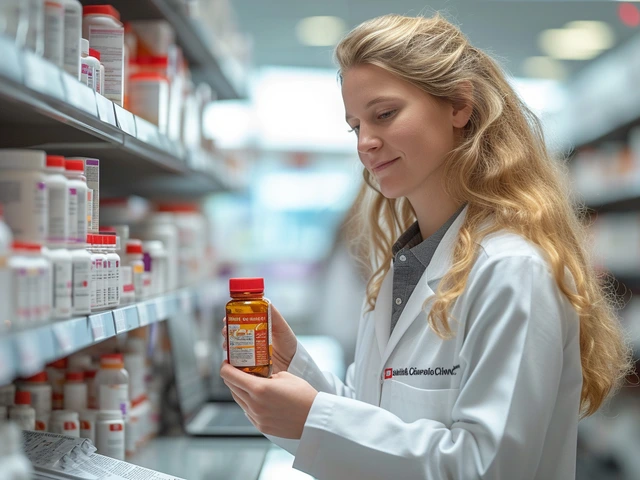What to Do If Your Medications Are Lost or Stolen While Traveling
Imagine this: you’re in Bangkok, your bag got stolen, and your insulin, blood pressure pills, or antidepressants are gone. No refill. No pharmacy that recognizes your U.S. prescription. Panic sets in. This isn’t rare. Around 22% of travelers on trips longer than 30 days face medication access issues, according to the European Centre for Disease Prevention and Control. The good news? You can fix this - if you know exactly what to do.
Replacing lost or stolen medications abroad isn’t about luck. It’s about preparation, knowing who to call, and understanding how foreign pharmacies work. The rules are different everywhere. In the UK, codeine is sold over the counter. In the U.S., it’s a controlled substance. In Thailand, pseudoephedrine is banned without a local prescription. You can’t just walk into a pharmacy and ask for your usual pills. But you don’t need to go without them either.
Step 1: Don’t Panic - Call Your Travel Insurance Assistance Line
If you have travel insurance, your first call should go to the 24/7 medical assistance line. Most comprehensive plans - like those from Allianz, AIG, or Allstate - include emergency medication replacement. They’ve got networks of local doctors and pharmacies in over 170 countries. You don’t need to figure out the system alone.
Here’s how it works: you call, explain what you lost, and they connect you with a local physician who can legally prescribe your medication. They’ll even contact your home doctor to verify your prescription. MedAire, a global medical response service, helps 89% of clients get replacement meds within 12 hours. That’s not magic - it’s process.
Don’t have insurance? Skip to Step 4. But if you do, this is your fastest path back to stability.
Step 2: Get Your Original Prescription Details
Before you even call anyone, dig out your prescription info. Not the pill bottle - that’s probably gone. You need:
- The generic name of the drug (not the brand)
- The dosage (e.g., 10 mg, twice daily)
- The prescribing doctor’s name and contact info
- Your medical condition (e.g., “Type 2 diabetes,” “ADHD”)
Why? Because foreign pharmacies won’t recognize your U.S. prescription. Even if you have a copy, most countries (89%, according to the International Pharmaceutical Federation) won’t fill foreign prescriptions. But they will accept a letter from your doctor - if you have one.
That’s why the U.S. Department of State and the International Society of Travel Medicine both recommend carrying a doctor’s letter before you leave. It should list every medication by generic name, dosage, and reason for use. 92% of travel medicine specialists say this cuts replacement time in half.
Step 3: Know What You Can’t Replace - Controlled Substances
Here’s the hard truth: if you lost Adderall, Ritalin, OxyContin, Vicodin, or any other Schedule II controlled substance, you’re in a tougher spot.
U.S. federal law (DEA guidelines, 2023) says you can’t refill these without a new prescription - even at home. And abroad? Almost no country will let a foreign doctor prescribe them. Not even with a letter.
Some travelers try to buy these on the black market. Don’t. The WHO estimates 500,000 people die each year from counterfeit drugs - especially common in Southeast Asia and parts of Africa. A fake Xanax pill could kill you.
Your only option? Contact your prescribing doctor. If they can do a telehealth visit and issue a new prescription for a non-controlled alternative (like a different ADHD med), that might work. But for opioids or stimulants, you may need to cut your trip short and return home. It’s harsh, but it’s the law.

Step 4: Find a Local Doctor - Even If You Don’t Have Insurance
No insurance? No problem. You still have options.
Go to a hospital or clinic. Ask for a doctor who speaks English. Explain your situation. Bring any documentation you have - even a photo of your prescription bottle. Many doctors will help if you’re honest and calm.
But here’s the catch: 76% of international doctors (per AMA 2022 data) require an in-person visit before prescribing anything unfamiliar - especially for chronic conditions like diabetes, heart disease, or mental health meds. They won’t just write a script because you say you need it.
That means you might need to wait a few hours or even a day. Plan for it. Carry a small emergency supply (at least 7 days) in your carry-on. IATA says 1 in 150 checked bags get lost. Don’t risk everything in one suitcase.
Step 5: Avoid Counterfeit Drugs - Know the Risks
Don’t buy meds from street vendors, unlicensed pharmacies, or websites that don’t ask for a prescription. The CDC warns that 10-30% of medications in some regions are fake. In places like Vietnam, Cambodia, or Nigeria, you might be buying flour, chalk, or worse.
How to spot a real pharmacy? Look for:
- Official signage and licensed staff
- Pharmacist on-site (not just a cashier)
- Original packaging with local language labeling
- Ask to see the box before they hand it over
And always check the expiration date. Temperature-sensitive meds like insulin can break down in heat. The International Diabetes Federation found that 41% of travelers had issues with meds exposed to extreme temps. Keep insulin cool with a portable cooling wallet - they’re cheap and available online.
Step 6: File a Police Report (Especially for Stolen Medications)
If your meds were stolen - whether in a bag, hotel room, or on public transport - file a police report. Not because it’ll get your pills back. But because you need proof for your insurance claim.
Airlines require theft reports within 21 days for baggage claims (IATA Resolution 701). Travel insurance companies demand them too. Without it, you won’t get reimbursed.
Get a copy of the report in English if possible. If the local police don’t issue one, ask for a written statement with their stamp and signature. It’s not ideal, but it’s better than nothing.

What You Should Do Before You Leave
The best way to avoid this whole mess? Prepare before you go.
- Carry a printed letter from your doctor listing all meds by generic name, dosage, and reason.
- Keep at least a 7-day supply in your carry-on.
- Take photos of your prescriptions and store them in a secure cloud app like Medisafe (used by over 5 million people).
- Research your destination’s drug laws. For example, melatonin is a prescription in Germany but OTC in the U.S.
- Buy comprehensive travel insurance that includes prescription replacement (68% of plans cover this, with $500-$1,000 limits).
- Know your pharmacy’s U.S. contact info. Chain pharmacies like Walgreens can transfer prescriptions between U.S. locations - useful if you’re returning home.
Costs and Real-World Timelines
How much does it cost to replace meds abroad? It varies:
- Western Europe: $75-$150
- Southeast Asia: $40-$90
- Latin America: $120-$200
Speed? With insurance help, 78% of travelers get meds within 24 hours. Without help? Only 42% make it in 48 hours. And without documentation? You’ll wait 3.7 times longer, according to a 2023 study in the Journal of Travel Medicine.
Don’t gamble. Carry your letter. Buy insurance. Know your meds.
Frequently Asked Questions
Can I get my prescription filled in another country without a local doctor?
No. Almost all countries (89%) won’t fill foreign prescriptions. You need to see a local doctor who can legally prescribe the medication under their country’s laws. Even if you have a copy of your U.S. prescription, it’s not enough.
What if I lost my controlled substance like Adderall or OxyContin?
You cannot refill these abroad. U.S. law doesn’t allow it, and most countries won’t prescribe them to travelers. Your only options are: 1) Contact your U.S. doctor for a telehealth consult to switch to a non-controlled alternative, or 2) Return home as soon as possible. Never buy these on the street - counterfeit versions are deadly.
Does travel insurance cover replacement meds?
Yes - but only if you have a comprehensive plan. About 68% of comprehensive travel insurance policies include prescription replacement coverage, usually up to $500-$1,000. Basic plans often exclude it. Always check your policy before you leave.
Can I use a digital prescription from my phone?
Rarely. Only 17% of countries accept digital prescriptions as official documentation, according to the International Pharmaceutical Federation. A printed letter from your doctor is still the gold standard. Apps like Medisafe are great backups, but don’t rely on them alone.
What should I do if I’m in a country where my medication is illegal?
If your medication is banned in the country you’re visiting - like certain ADHD or pain meds - you must get a letter from your doctor explaining your medical need. Even then, you may not be able to get it replaced. In extreme cases, you may need to return home. Always check your destination’s drug laws before you go using the CDC’s Yellow Book or the U.S. State Department’s travel site.






David Barry
13 November, 2025 . 17:56 PM
This is the most thorough guide I've seen on this topic. But let's be real-most people won't read past Step 1. They'll panic, Google 'buy Adderall Bangkok,' and end up with chalk and regret. The 500k deaths from counterfeit meds? That's not a statistic. That's someone's cousin. And no one's talking about how insurance companies make you jump through 17 hoops just to get $300 reimbursed. You're better off just carrying extra pills. Always.
Benjamin Stöffler
14 November, 2025 . 07:20 AM
You mention that '89% of countries won't fill foreign prescriptions'-but you cite the International Pharmaceutical Federation without linking the source. That's not data-it's rhetoric. And where's the peer-reviewed study backing the '3.7 times longer' claim? You're cherry-picking numbers to scare people into buying insurance. Meanwhile, in Thailand, pharmacists routinely fill U.S. prescriptions if you show a bottle and a smile. The real issue? Americans think their healthcare system is the global standard. It's not. And pretending it is? That's the real danger.
Mark Rutkowski
15 November, 2025 . 12:44 PM
I’ve been traveling for 12 years with Type 1 diabetes, and this post? It’s the closest thing to a lifeline I’ve ever seen. The doctor’s letter? Game-changer. I carry two copies-one in my wallet, one in my phone’s encrypted notes. And I always ask for the pharmacist by name. They’re humans, not robots. One time in Marrakech, the pharmacist cried when I told him my insulin had been stolen. He gave me a week’s supply, no questions. He said, 'We all need to live.' Don’t treat this like a bureaucracy-it’s a human thing. Be calm. Be clear. Be kind. It works.
Ryan Everhart
17 November, 2025 . 12:01 PM
So... you're telling me if I lose my Xanax in Peru, I should just fly home? Cool. And what if I'm in a country where the only doctor who speaks English charges $200/hour? And I don't have insurance? And my credit card's maxed out? Do I just... stop breathing? This guide reads like a brochure for travel insurance salespeople. Real talk: most of us aren't rich. We're just trying not to die. Maybe next time, include a link to the WHO's list of safe pharmacies instead of just saying 'don't buy from street vendors.'
Alyssa Lopez
19 November, 2025 . 03:45 AM
I work for a pharma co and let me tell u-MOST of these 'local docs' are just scam artists. They'll write you a script for anything if you pay cash. I've seen it. And the 'coolers' for insulin? Useless in 110° heat. I had a patient in Nigeria who lost her meds and ended up in the ER because her insulin went bad. Don't trust anything outside the US. Period. Get your insurance. Or don't travel. Simple.
Alex Ramos
19 November, 2025 . 05:59 AM
Just had this happen in Vietnam last month. Lost my antidepressants. Called my insurance-they hooked me up with a local clinic in Hanoi. Doctor spoke perfect English. Got me a 14-day supply of sertraline for $22. No drama. Took 6 hours. I brought my bottle photo, my doctor's letter, and a smile. Seriously, this stuff works if you're prepared. Also-get Medisafe. It saved me. 🙏
edgar popa
20 November, 2025 . 07:55 AM
Carry extra pills. Always. I lost mine in Italy and just bought a new bottle at a pharmacy with my bottle pic. No big deal. Seriously, stop overcomplicating it.
Eve Miller
21 November, 2025 . 13:48 PM
You state that '92% of travel medicine specialists say a doctor’s letter cuts replacement time in half.' Where is your citation? This is not a blog post. This is medical advice. If you're going to quote statistics, you must provide verifiable sources. Otherwise, you're spreading misinformation under the guise of helpfulness. And you call it 'harsh' that people may need to cut their trip short after losing controlled substances? No-it's the law. And laws exist for a reason. You're trivializing public safety by implying there's a loophole.
Chrisna Bronkhorst
22 November, 2025 . 00:58 AM
You're missing the point entirely. This isn't about prescriptions. It's about privilege. The people who can afford insurance, carry doctor's letters, and fly home when things go wrong? They're the ones writing these guides. The rest of us? We're stuck. I lost my meds in Cape Town. Didn't have insurance. Didn't have a letter. Got a local doctor to prescribe me a substitute. Took 3 days. I cried. But I lived. So stop acting like this is a checklist. It's a survival game-and the rules are rigged.